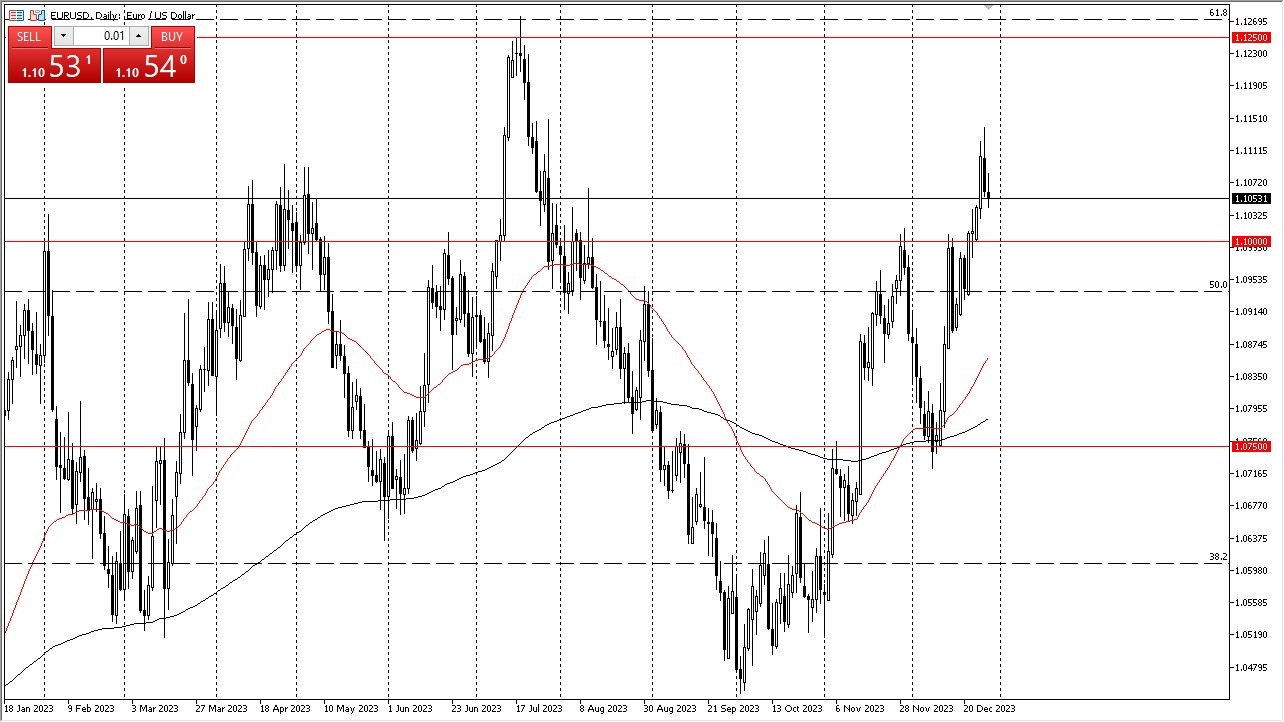- Looking at the Euro's performance against the US dollar, we have seen a slight retracement during the trading session on Friday.
- However, it appears that buyers are inclined to maintain a somewhat bullish position.
- Consequently, we will likely enter a phase characterized by consolidation. Given the imminent transition to a new year, many traders are simply squaring positions more than anything else.
Top Forex Brokers
The 1.10 level remains a notable point of interest in this context, as it has shifted from a prior state of resistance to its current role as a support level. This shift is attributed to what is known as market memory, highlighting the significance of monitoring this level closely should the price approach it. A decline below this level does not necessarily imply a major breakdown but rather suggests a potential shift towards seeking buyers around the 1.09 mark.
On the Upside…
On the upside, the 1.11 level is perceived as an area of potential short-term resistance. Nevertheless, the prevailing outlook suggests that the Euro is likely to target the 1.1250 level over time. While this ascent may require some duration, it appears inevitable based on the available data.
Within this context, a significant confrontation is expected to unfold around the 1.1250 level, as it aligns with the 61.8% Fibonacci retracement level derived from a previous sell-off occurring several years ago. It is important to note that this market's trajectory is intricately linked to interest rates, specifically the 10-year yield in the United States. A decrease in the yield tends to exert upward pressure on the Euro, while an increase has the opposite effect. However, a potential caveat to this relationship is the occurrence of interest rate declines driven by a "panic bid" for safety. Such a scenario may not only lower US rates but also elevate the US dollar.
At present, there are no known factors on the horizon that are likely to trigger such a scenario. Consequently, the prevailing trend points toward the Euro's potential for further upward movement, subject to the influence of interest rate differentials between the Eurozone and the United States. As things stand now, it looks like the ECB is less likely to cut rates than the Fed, but I think it is only a matter of time before the ECB will have to follow the Fed as the EU is heading into a recession.
 Ready to trade our Forex daily analysis and predictions? Here are the best regulated trading brokers to choose from.
Ready to trade our Forex daily analysis and predictions? Here are the best regulated trading brokers to choose from.
